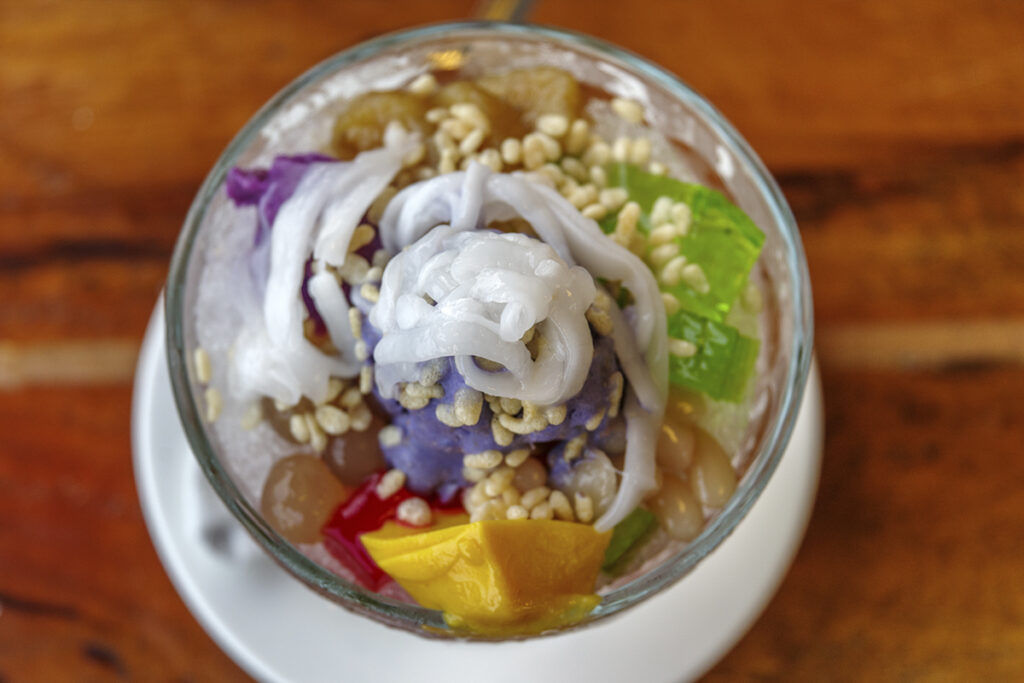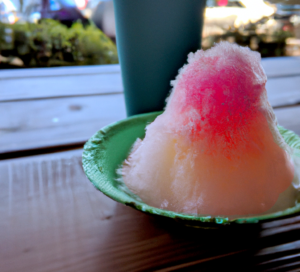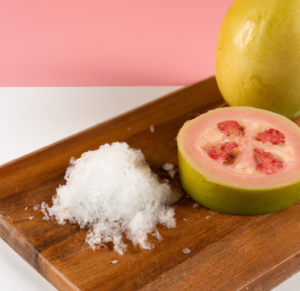Frosty love of Filipino’s worldwide, halo-halo is made by shaving plain, unflavored ice into a tall frosty glass, and flavoring it with sweet evaporated (or sometimes coconut) milk. Then, it’s festively adorned with layer upon layer of luscious colors, flavors, and textures. Many of which might, at first, seem a little out-of-place if you’ve never given halo-halo a try before. Halo-halo literally means mix mix in Tagalog, and it certainly lives up to its name.
Every part of the Philippines has their own twist on halo-halo, so ingredients can vary widely. Very widely. A few common additions include leche flan (egg custard), macapuno (soft, shredded coconut flesh), nata de coco (coconut gel), monggo beans, red beans, toasted rice flakes, jackfruit, ripe or sweetened banana, sweet corn, shredded coconut, tapioca pearls, gelatin cut in cubes (in red and green colors), sweet potato, and sago pearls. In some places, you’ll even find people adding cornflakes, polvorón, chili, or even cheese into the intoxicatingly sweet mixture. Oh sorry, did you think we were done? We’re talking halo-halo here—you’re not done until you top it with a scoop of vanilla or ube (purple yam) ice cream. Then, you’re in business. And business is sweet.
No matter the exact ingredients in the dish, the proper way to indulge in a halo-halo experience is, unquestionably, to vigorously stir all the ingredients together prior to taking that first bite. The idea is to taste every ingredient in every spoonful of this intensely flavorful dessert. You’ve got to give your mix mix a good mix, basically. Mixing is important, because all that ice and milks starts to melt and jive with that crazy blend of stuff you’ve put in there in ways that will positively alter your destiny on this earth.
Halo-Halo in the Philippines
Take a trip to one of the 7,000+ islands that make up the Philippine archipelago, and you’ll find this all-time Filipino favorite served pretty much everywhere. From the poshest restaurants of Manila, to fast food chains like JolliBee, to mom and pop sari sari (convenience) stores, all the way to the humblest street stands and padjak (tricycle) peddling sellers. You never have to search too far in the tropical warmth of the Philippines to find the life-affirming taste of some yummy halo-halo.
As with Hawaiian shave ice, halo-halo also originated from Japanese Kakigori. In the period just before World War II, it was Japanese settlers and farmers living in the Philippines who sold modified kakigori that included local mongo, red, and kidney beans, and even papaya. Rather than calling the concoction halo-halo, the Japanese called it “mongo-ya” at the time since it included sweetened mung beans. During the war itself, Japanese officers even managed to turn a profit from their dessert skills by selling mongo-ya to the Filipino public. When the Japanese settlers eventually left after World War II, the Filipinos took hold of the popular dessert and added to it over the years in all kinds of delicious ways.
If you’re headed to the Philippines any time soon, make sure to give it a try. And if you’re stateside, you can now find loads of fantastic Filipino restaurants serving up their unique spin on the halo. As the late Anthony Bourdain once remarked about halo-halo, “It makes no goddamn sense at all. I love it.” Can I get a halo-llelujah?
Halo-Halo Recipe
The traditional halo-halo is made with finely shaved or crushed ice which is then topped with sweet evaporated milk and many different flavorings and ingredients. In making homemade halo-halo, you don’t always need to stick to a traditional, one-size-fits-all approach. The best thing about this dessert is that it invites you to be more experimental in the kitchen so you can create a variant that fits your taste bud. While there are an infinite variety of halo-halo variations served in different parts of the Philippines, here’s our take on a traditional halo-halo.
Ingredients:
Shaved ice
Sweet Evaporated Milk (or coconut milk)
Sugar
Leche Flan (creamed caramel flan/egg custard)
Nata de Coco (coconut gel)
Ube (purple yam)
Sweetened Mung or Azuki beans
Ripe banana
Shredded Coconut or Macapuno Strips
Jackfruit
Tapioca Pearls
Toasted Rice Flakes
Sweet Potato
Sweet Corn
Vanilla or Purple Yam Ice Cream
Kaong (sugar palm seeds)
Preparation:
- Prepare the shaved ice and set aside with the evaporated milk (or coconut milk), leche flan (creamed caramel flan), shredded coconut (or macapuno strips), and ice cream. Add a spoon or two of each of the remaining ingredients in a tall glass or bowl to your desired tastes.
- Once the ingredients are layered, mound the shaved ice on top. Fill the container with just enough ice to reach the top, then drizzle with either evaporated milk or coconut milk.
- Top the ice with a serving of leche flan, shredded coconut, and a scoop of ice cream.
- Rigorously mix all the ingredients together, and share a glass with your loved ones!




